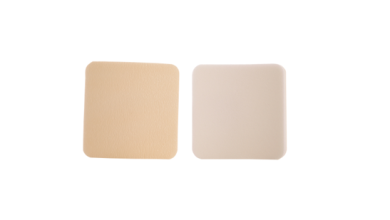4 Tips for Caring for Acne-Prone Skin in Different Seasons

Each season brings its own unique energy. Winter is cold but cozy. Spring symbolizes new beginnings. Summer has the heat to offer. Fall provides a refreshing break from the unbearable temperatures.
But each season can also mean different things for your skin. And if you’re acne-prone, it can be hard to tailor skin care to accommodate the traits of each seasonal change. Here are a few steps to adjust your routine to fit the needs of each season, all while fighting breakouts.
1. Build Your Go-To Acne Prevention Routine
While the weather will fluctuate, your core skin care routine doesn’t have to. Consistency is key with any skin care regimen, but it’s even more so when you have acne-prone skin. Building a strong base routine can accommodate the changes that come with each new season without causing new breakouts.
When narrowing down your core products, remember to focus on what your skin needs at the bare minimum. For acne prevention, you’ll need salicylic acid or benzoyl peroxide. To prevent dryness, find a moisturizer with simple ingredients. Sun protection is a must, so look for a daily sunscreen with SPF 30 or higher. Round it out with any acne medication you may take, and you’re all set.
From there, your routine can easily be changed to fit your current needs or the weather you’re experiencing. But, at its core, you know you have products at your disposal that are tried and tested. It’s a trusty routine you can rely on regardless of your skin’s state or what season it is.
2. Tailor Your Cleansing Process
When fighting stubborn acne and trying to prevent new breakouts, having clean skin is a must. And using a gentle cleanser at least once a day should be a part of your routine. Strategically tailoring your cleansing steps can help your skin thrive despite seasonal changes.
During spring and summer, you’re probably itching to get outside. But sweat, makeup, and sunscreen can create a breeding ground for bacteria-fueled acne. So, double cleansing can be especially helpful in the summer. Start by removing makeup and dirt with micellar water or a cleansing balm. Then, use your gentle cleanser to remove anything that’s left over. With this process, you can be confident your skin is clean.
Fall and winter cleansing, understandably, will look a bit different. Your skin may be chapped from chilly winds and irritated by dry heat indoors. Using a hydrating cleanser can help combat these issues without creating more problems. Of course, you’ll still want to remove makeup. But you can probably get away with a single cleanse since it’ll be gentler for your sensitive skin.
3. Find the Right SPF for the Season
Wearing sunscreen every day is essential for any skin care routine. It protects your skin from the sun’s harmful UV rays, can help with anti-aging, and can be beneficial for fighting acne. But knowing which formulas to reach for during each season takes a bit of trial and error.
When the sun is beating down during spring and summer, you’re likely basking in it poolside or out on frequent walks. And the rising temperatures mean sweat. Opting for a mattifying sunscreen can help keep your skin looking fresh despite the heat. It’s even better if your sunscreen has acne-fighting ingredients like niacinamide and zinc oxide to further control oil. You’ll be left with a look that protects you from the sun and prevents acne.
With cooler temps, it’s easy to think you don’t need sun protection. While you won’t need as much sunscreen during the fall and winter, skipping it altogether isn’t a good idea. Instead, look for an option with a tint or glow and SPF 30 or more. You’ll be protected from roughly 97% of harmful UVB rays while also looking refreshed.
4. Pair Complementary Products Together
At its core, skin care is chemistry. There are certain combinations of products that will give you your desired results. It’s just about knowing what options are good and which to avoid during each season of the year.
When it’s hot and humid, your skin probably needs additional protection from the elements to prevent breakouts. That’s what makes pairing vitamin C and vitamin E a smart move. Vitamin C fights aging, reduces dark spots like acne scars, and brightens your complexion. Vitamin E protects against free radicals and can prevent UV damage. Together, they’re the perfect addition to your spring and summer routine.
During colder months, you may notice adverse effects of your acne spot treatments. From dryness and flakes to unsightly texture, there are plenty of downsides. Instead of using them on their own, look at investing in a retinol product. Well-known for its anti-aging benefits, retinol can also help unclog pores. Pair it with a gel moisturizer and hydrocolloid patches to get the look you’re after. Feel free to visit to learn more about – pearlvine login
Skin You’ll Love All Year Round
Life gets busy. And you may not be able to do a 10-step skin care routine to prevent acne every single day. That’s okay! A key point of creating a routine is that you can replicate it and commit to it on most days. If that means tweaking during busier seasons, so be it. As long as it works for you, that’s what matters most.





